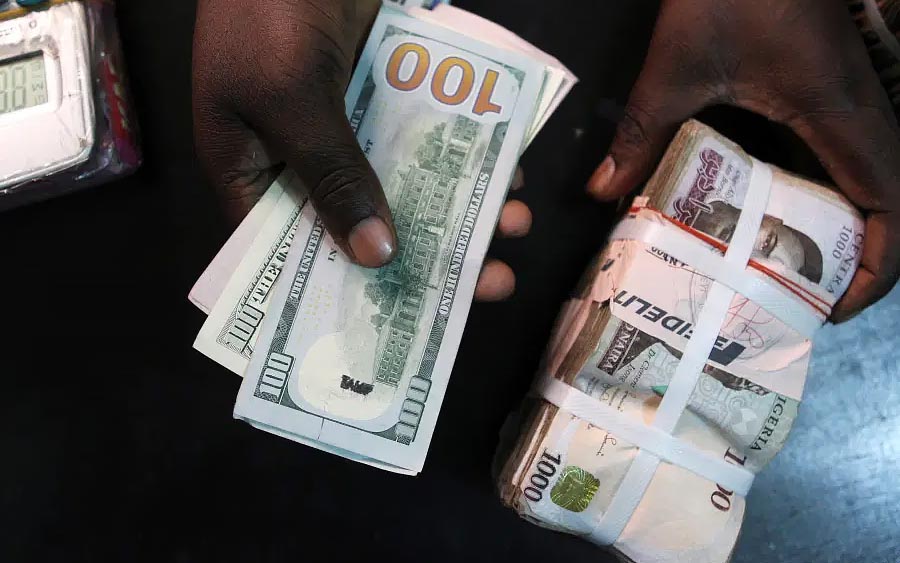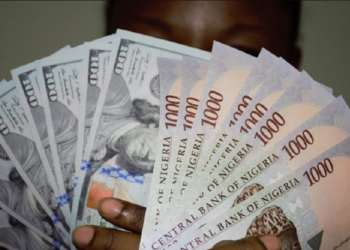Friday, 10th December 2021: The exchange rate between the naira and the US dollar closed at N415.10/$1 at the official Investors and Exporters (I&E) window.
Naira depreciated marginally against the US dollar on Friday to close at N415.10/$1. This represents a 0.01% drop when compared to the N415.07 that was recorded in the previous trading sessions as a drop in the country’s external reserves continues with a decline of $26 million.
Also, the naira depreciated against the US dollar on Friday as it closed at N575/$1. This represents a N5 drop when compared to the N570/$1 that was recorded in the previous trading session. This is according to information obtained from BDC operators interviewed by Nairametrics.
The local currency depreciates at the official market as the forex turnover drops significantly by 84% during Friday’s trading session.
Trading at the official NAFEX window
The exchange rate at the Investors and Exporters window depreciated to close at N415.10/$1 on Wednesday, representing a 3 kobo drop when compared to the N415.07/$1 that was recorded at the last trading session.
The opening indicative rate appreciated to close at N413.69/$1 on Friday, December 10, which represents a 2 kobo gain when compared to the N413.71/$1 that was recorded in the previous trading session.
An exchange rate of N452.15/$1 was the highest rate recorded during intra-day trading before it settled at N415.10/$1, while it sold for as low as N404/$1 during intra-day trading.
Forex turnover at the official window dropped significantly by 81.4% to trade at $84.44 million on Friday.
According to data tracked by Nairametrics from FMDQ, forex turnover at the I&E window declined from $453.38 million on Thursday 9th December 2021, to $84.44 million on Friday 10th December 2021.
Cryptocurrency watch
The world’s largest and most popular cryptocurrency, Bitcoin, declined by 0.66% to trade at $48,849.51 amid the COVID scare.
Bitcoin posted its fourth consecutive weekly decline after a brief bounce triggered by a report showing US inflation accelerated failed to unwind the negative sentiment that has recently gripped digital-asset markets.
It is also down by about 30% since reaching a record of almost $69,000 on November 10. It has still gained about 65% this year. Ether, which is also coming off an all-time high set last month, declined for a second day.
The global cryptocurrency market dipped further amid a constant decline over the past many days due to a variety of factors. The global cryptocurrency market capitalization on Saturday stood at $2.24 trillion.
Meanwhile, Ethereum, the world’s second largest cryptocurrency by market capitalization dropped by 1.66% to trade at $3,978.53
Crude oil price
Oil prices continued with its rally with Brent crude going up by 0.67% to trade at $75.65 per barrel as oil posts strongest week since August as virus fear abates.
The West Texas Intermediate (WTI) futures climbed 8.2% the week that just ended with fuel consumption so far escaping any major blows from the omicron variant, although confidence is limited.
Oil has seen a remarkable turnaround after tumbling into a bear market on November 30, following a multiweek plunge.
Some signs of weakness are emerging. Traders are facing the prospect of a weakening physical market for crude in Asia, despite Saudi Arabia’s move to increase oil prices for January.
According to some unnamed sources, Saudi Arabia will supply full contracted oil volumes to most of its buyers in Asia. This will be the fourth month in a row during which Saudi Arabia has supplied full volumes, which suggests that crude oil supply is sufficient for the time being.
The West Texas Intermediate went up by 0.91% to trade at $72.32 per barrel. Natural gas was up by 1.38% to trade at $3,979 while OPEC Basket went up by 5.15% to trade at $75.09 per barrel.
On the other hand, Nigerian crude, Bonny Light dropped by 0.60% to trade at $74.38 per barrel.
External reserves
Nigeria’s external reserve dropped by 0.06% on Thursday, 9th December 2021, to close at $40.905 billion. This represents a decrease of $26 million compared to $40.931 billion recorded as of the previous day.
The consistent decline that had been experienced in the country’s reserve level could be attributed to the continuous intervention of the apex bank in ensuring the stability of the exchange rate.
It is worth noting that the nation’s foreign reserve had gained $5.99 billion in the month of October, as a result of the $4 billion raised by the federal government from the issuance of Eurobond in the international debt market.
In the month of November, Nigeria’s external reserve lost $633.47 million in value as against a gain of $5.99 million recorded in the previous month and $2.76 million gain in September 2021. On a year-to-date basis, the reserve gain has reduced to $5.74 billion.
















